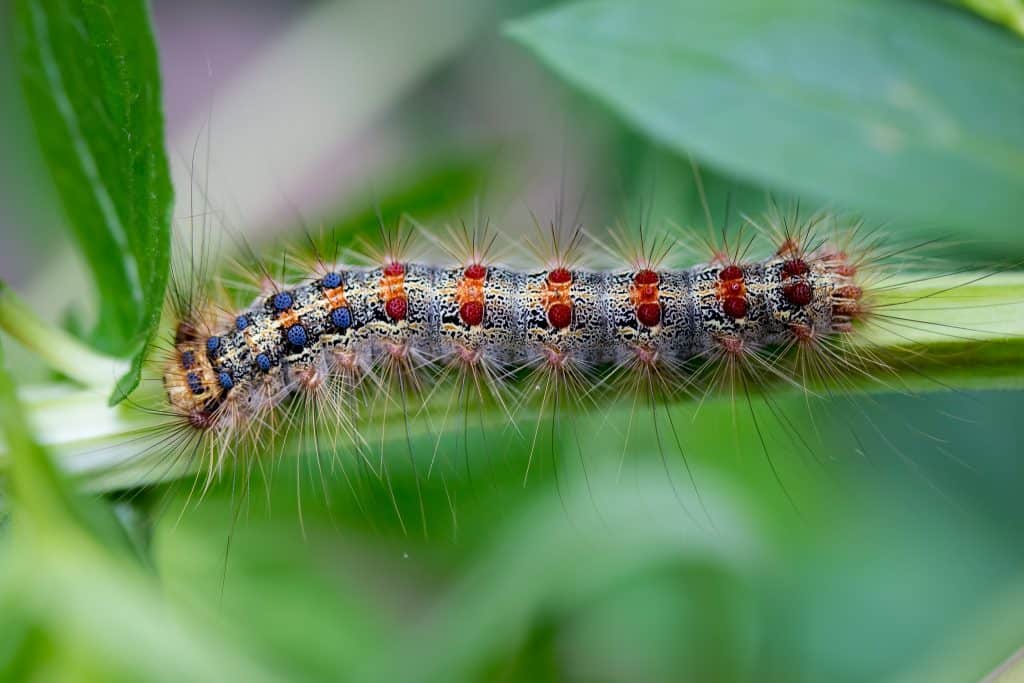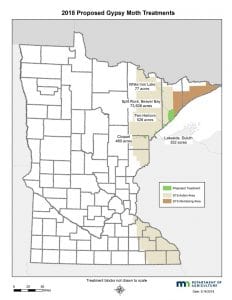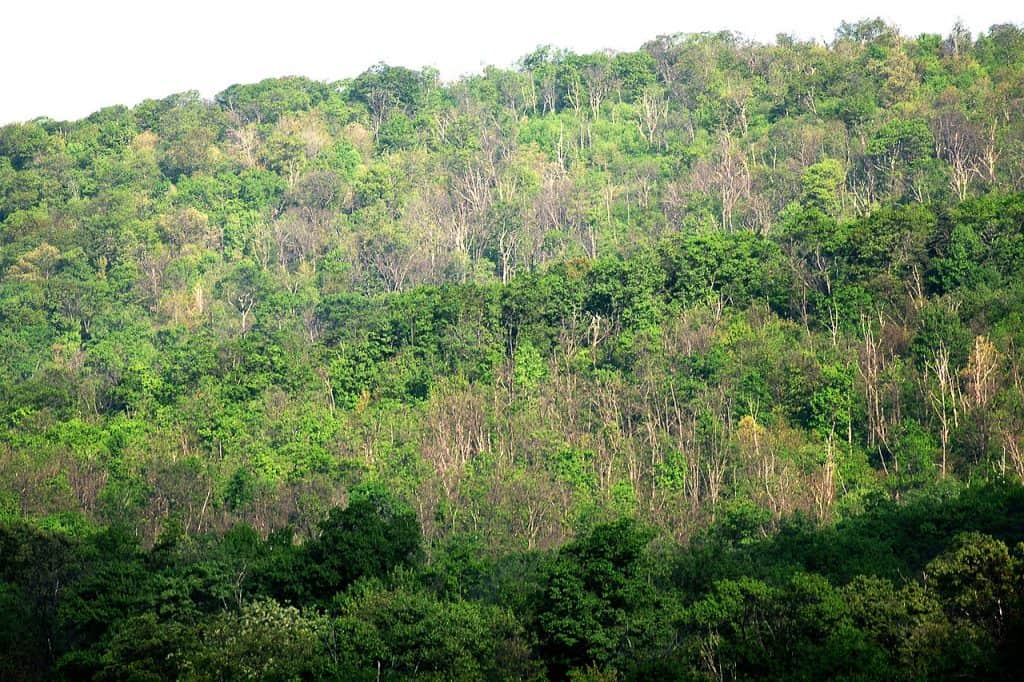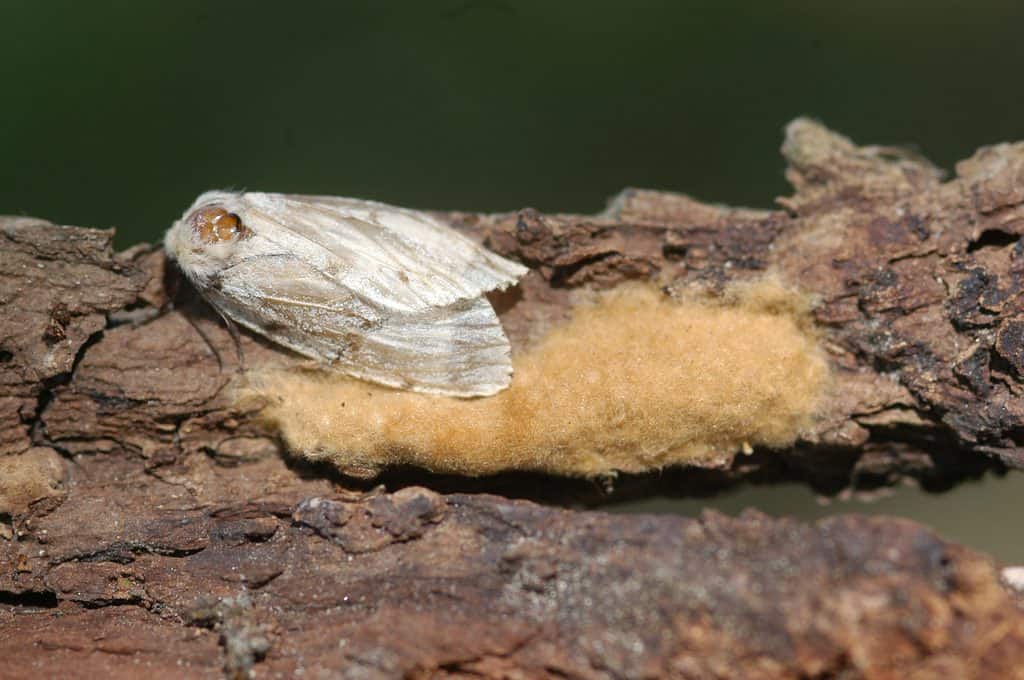

A group of government agencies has targeted about 12,000 acres of land in northern Minnesota to slow the spread of Gypsy Moths, an exotic pest. Nearly 80,000 acres were sprayed by aircraft this summer to kill caterpillars or prevent adults from reproducing.
Gypsy Moths originated in Europe. In North America, they have been known for huge populations, with caterpillars that can eat the leaves off large swaths of forest. They prefer several species that are common in northern Minnesota, including oaks, aspens, paper birch, basswood, and willows.
The U.S. Forest Service and Minnesota Department of Agriculture are leading efforts to contain outbreaks. They say being proactive is key.
“It is important to treat gypsy moth now, while the population is relatively low and when treatment methods with few adverse environmental impacts can be effective,” wrote Connie Cummins, Superior National Forest Supervisor, stated in a decision-making document.
On the Forest Service lands, only one type of treatment was used. Large amounts of synthetic pheromone that helps adult male moths find females were used to confuse the creatures, and reduce the reproduction rate.
On other lands in the region, that strategy was combined with a naturally-occurring bacteria that kills caterpillars. Proposed sites near White Iron Lake, in Duluth, Two Harbors, and Cloquet were sprayed with Bacillus thuringiensis subsp. kurstaki (Btk).
Forest devastation

Gypsy Moths were brought to the United States intentionally in the nineteenth century.
“They were brought over to New England back in the 1800s to actually mate with silkworms and make better silk,” Allen Sommerfeld of the MDA told WDIO.
They have been moving west ever since, with a path of destruction behind them. Parts of the Atlantic Seaboard and Lower Michigan have been devastated by repeated defoliation. The creatures were first caught in Minnesota in the 1970s.
The Minnesota Department of Agriculture paints a frightening picture if treatment doesn’t occur in the state.
“In May/June, caterpillar numbers in any single backyard will reach into the thousands or even millions. Oak trees and other host trees and shrubs will be bare by the beginning of summer. Trees may grow a second set of leaves if they are healthy, but they will be weakened… As thousands of caterpillars feed, there is an audible sound of caterpillar droppings falling to the ground. Like any other excess nutrient, droppings get into runoff water and into the local watershed. Each caterpillar sheds its bristly skin four or five times as it grows, and the skins pile up. The bristles may become airborne and irritate human eyes, skin and respiratory systems. In fact, many people develop a rash if they come into contact with the bristles. It becomes extremely unpleasant to work or play outdoors; the caterpillars will also crawl on houses and may get inside.”
The Forest Service and U.S. Fish and Wildlife Service found that the proposed treatments would have no adverse impacts on threatened wildlife, including Canada lynx and gray wolves. The treatments could affect the Northern Long Eared Bat, but it was not likely to do any harm.
Keep them contained

Infestations can be very costly, including expensive removal of dead trees by private property-owners.
The moths are moved into new areas by people transporting items with eggs attached, including furniture and firewood.
We can all prevent their spread by inspecting all outdoor articles and vehicles, removing and destroying “hitchhikers” before returning to Minnesota from quarantined counties, which are located throughout the northeastern U.S. and into Wisconsin. The state enacted a quarantine in Lake and Cook Counties, in Minnesota’s northeastern region, in 2014.
It is a violation of the quarantine to move gypsy moths in any stage of development; logs, posts, sawbolts, and pulpwood; Bark and bark products; Nursery stock; Christmas trees, boughs, wreaths and garland; Firewood for commercial sale and residential use; Outdoor household articles; Mobile homes and associated items; Any other products, articles, or means of conveyance that present a high risk of artificial spread of gypsy moth.
Other actions recommended by the DNR include:
- Become familiar with the gypsy moth, its life cycle, and where it might be found.
- Inspect and remove gypsy moths from your vehicles and belongings when traveling in and out of infested areas.
- Buy firewood produced locally when visiting campgrounds or recreation areas.
- If you bring firewood with you, be sure to burn it all before leaving. Do not leave firewood for the next visitor.
- As a business owner, make sure all imported goods arrive with the proper certification.
- Support the MDA program and trappers placing traps in your neighborhood.
- Contact the DNR for assistance when developing a forest management plan.

